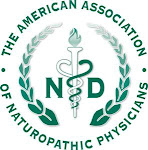
Photo by D Sharon Pruitt, via Flickr, used under the Creative Common's License.
A new year, new opportunities... or maybe repeat opportunities. How to choose which challenges to take, or which challenges to build upon from earlier steps. The decisions of a new year.
And as this year begins, I find many great opportunities to spread the word about naturopathic medicine, in new ways, to a new group of health care providers. In my community, a number of heart and vascular guys have recently come together and formed a new group, and in the process have decided that they want to broaden their approach to health care. They want to look at serving patients beyond performing procedures and dispensing pharmaceuticals, but practice from a more integrated place. As we all know, however, liking an idea and implementing it are not often an easy step. But these guys are asking some good questions, and that is very encouraging. Not just asking who should be involved, but the how, the when, the where, and the big question, the why. Seems simple, but there is so much education involved in answering the why.
For the our purposes here, I’ll keep to just our profession of naturopathic medicine and not approach the questions of the why for all the other health care practices considered, such as acupuncture, hypnotherapy, exercise therapeutics, mind-body work . . . simply, why do these patients need naturopathic care? I am certain that we can each give 50 reasons in less than 5 minutes, and it would seem like a relatively mindless effort. The question, however, is really about the why when the answer involves two things: the ability to change, and the dollar. The conversation begins with the discomfort that the idea of having to change how we think and how we behave brings to so many of us. The discussion then moves on to the bare facts of economics – simply, that many patients can’t afford to continue taking pharmaceuticals due to the ongoing costs of those pharmaceuticals, let alone adding the cost of another provider or the cost of their recommendations. Their insurance pays for the procedures, but not the maintenance meds. How do we imagine we can get them to an appointment with an ND, and then, to pay for supplements. But what about the fact that Americans are spending billions of dollars on complementary and alternative therapies? What patients are going to those providers and paying their hard earned cash for those appointments? How do we get these patients, who are not thinking about what they can do to change their lifestyle habits, to consider doing so? These heart and vascular guys are asking these questions. How do we know which direction to send the patients? Which of the providers that are involved in this program will best serve which patients? How do we know? How can we help patients to see the value?
So begins the development of a program. Not the logistics of bringing all these folks these to the table, looking at credentials, nor finding out where and how we can serve patients under one roof or two. It’s about providers learning from one another, what we do, how we think, how we approach health care that is distinct, yet can be integrative and whole. Communicating, respecting one another’s approach to health care, keeping the patient in the center. This is the work that is the challenge, for which none of us ever took a class, for which there is yet no curriculum. An integrative clinic such as this is one way to work out some of these issues, not unlike the immersion approach to learning a language. And life’s lessons of how to get along and play well together should prepare us to some degree, but there is so much more. And this seems to be where the work is – no matter how many stories I hear, no matter what the location or who the group members are, the challenge is how to work together, well. I think that asking the right questions is a great place to start.







